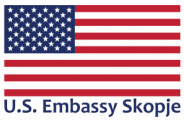Media articles containing speech that attacks, harasses, threatens or offends a person based on his national origin, ethnicity, skin color, religion, gender identity, sexual orientation, are articles that contain hate speech. Hate speech is a speech that promotes or instigates violent acts or acts of hatred, as well as speech that creates and fosters a climate of hatred and prejudice.
In essence, hate speech is a communication that has no meaning other than the expression of hatred, which in the future is very likely to cause violence. Hate speech can appear in any form of expression and is often present in social networks, blogs, forums, but the media are not excluded, as well.
According to the Code of Conduct, the media should not include hate speech in their articles. Article 10 of this Code states that: The journalist will not consciously create or process information that endangers human rights or freedoms, will not use language of hatred and will not incite violence and discrimination on any ground (national, religious, racial, gender, social, linguistic, sexual orientation, political…).
The media should endeavor to refrain from conveying hate speech, as well as any other content that may incite discrimination on any ground, as well as violence. The communication language of journalists must be carefully built without elements that point to racism, misogyny, sexism, anti-semitism, xenophobia or any other prejudice. In the media, hate speech is triggered whenever a vulgar narrative is used instead of impartiality and objectivity.
Examples of hate speech:
Hate speech is easily merged with disinformation. It is often used as a tool that intensifies the harmful effect of false news.
The Agency for Audio Visual Effects has developed a Guide for Hate Speech Monitoring , which explains the aspects of hate speech in the media.
In the Macedonian legislation, there is a legal framework for hate speech regulation. In the Criminal Code with several crimes, hate speech is directly or indirectly sanctioned.


